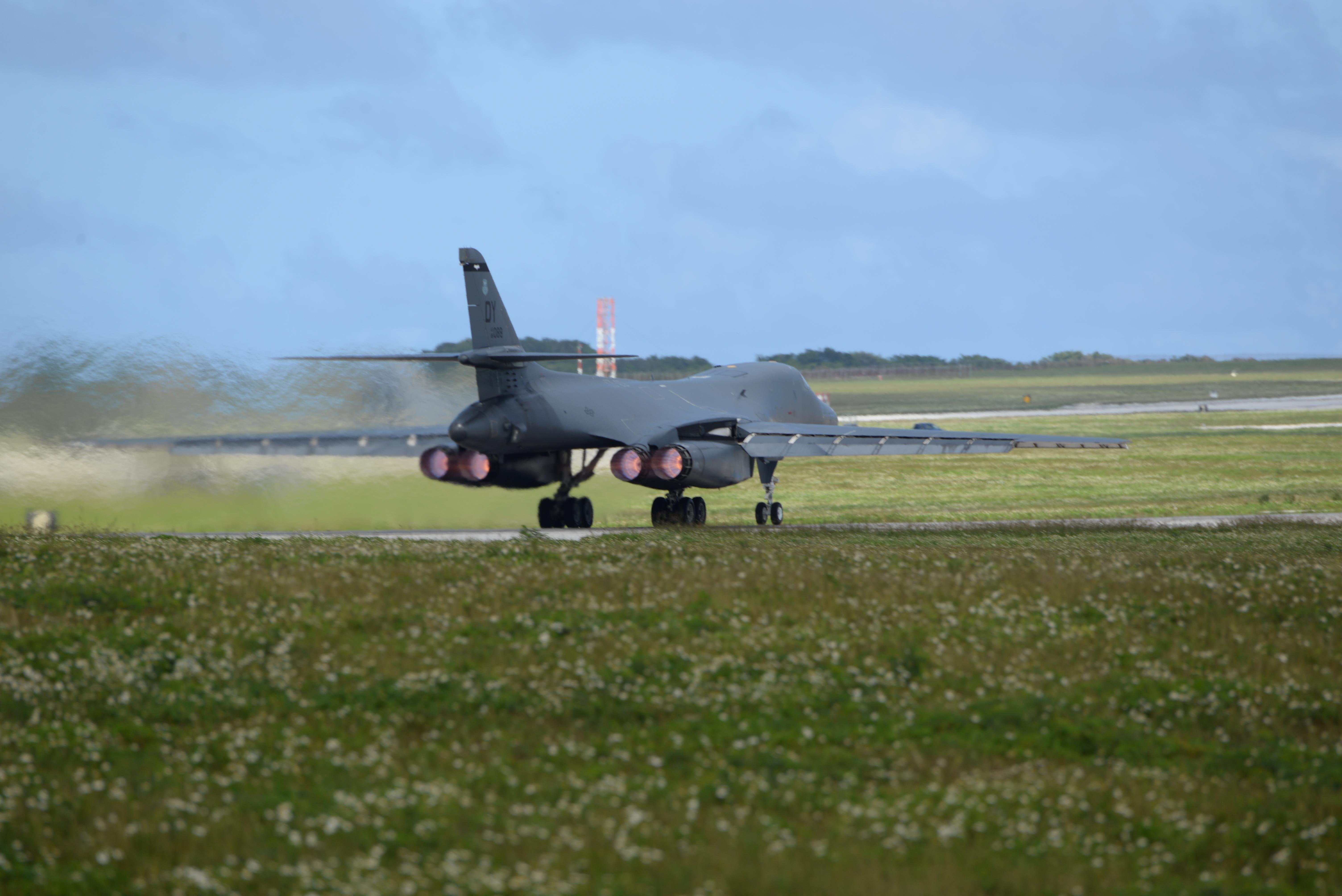A B-1B Lancer assigned to the 9th Expeditionary Bomb Squadron, Dyess AFB, Texas, takes off during Exercise Cope North 2017 at Andersen AFB, Guam, Feb. 22, 2017. Air Force photo by A1C Gerald Willis.
Rep. Mac Thornberry (R-Texas), chairman of the House Armed Services Committee, has released an Indo-Asia-Pacific security bill that calls for increased US military posture and new defense spending in the region. The proposed legislation comes just over a month after Adm. Harry Harris, chief of US Pacific Command, told Congress that US military strength is key to stability in the region.
“It is essential that the United States reassure our allies and friends that we are committed to stability and security in that region now and in the future,” Thornberry said in a statement. “One of the best ways to do that is to increase our military presence and enhance our readiness there.”
The bill will be folded into the 2018 National Defense Authorization Act, which is scheduled for committee consideration beginning in late June.
Thornberry has criticized President Donald Trump’s 2018 budget proposal for not raising military spending enough. The bill for the Pacific region would authorize $1 billion in new “critical munitions” spending; $1 billion for new Terminal High Altitude Area Defense (THAAD) anti-missile systems; $15 million dollars for missile defense exercises with Japan, the Republic of Korea, and Australia; and $100 million for advanced joint military exercises.
Secretary of Defense Jim Mattis would also be required to produce a report on “the security challenges, including threats, emanating from the Indo-Asia-Pacific region,” and to provide an assessment of current US “force posture and basing needs” in the region.
Thornberry also calls for a specific assessment of “the ability of the Air Force to employ the full range of bombers” and “associated weapons” as part of its continuous forward presence. Members of Congress have recently questioned the low aircraft availability rates of some USAF bombers and the impact on sortie generation.
In the Pacific region, those sorties often support freedom of navigation exercises, which have dropped off in frequency. To address this issue the bill also calls for “a regular and routine schedule for freedom of navigation operations in the sea and air.”
The bill insists that an on-schedule development and delivery of the B–21 bomber and F–35 Block 4 dual-capable aircraft are “fundamental” to providing continued security in the region, and it calls for “the fielding of Long Range Standoff weapons in order to replace the current fleet of Air-Launched Cruise Missiles.”
Other focuses include the development of “resilient space architectures,” the incorporation of cyber defense into joint exercises, and enhancing ISR capabilities in the region—including a new plan for the “sharing of commercial imagery” with the ROK and Japan.
